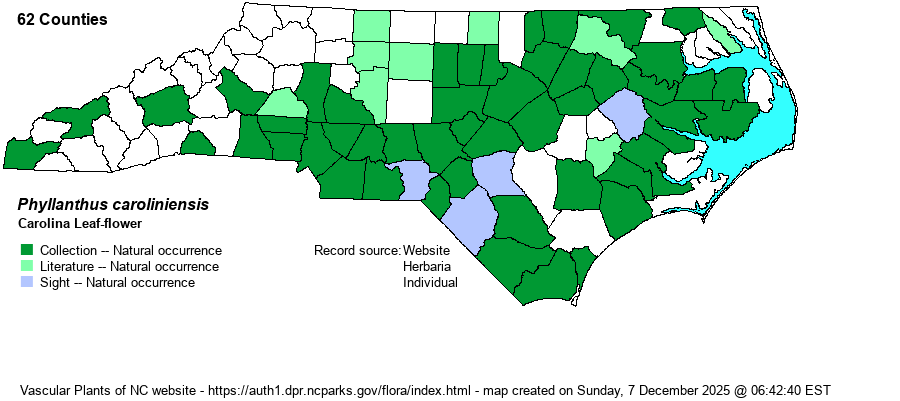| Author | Walter | |
| Distribution | Throughout the Coastal Plain, and formerly just in the southeastern half of the Piedmont and the southern Mountains. In the last five to ten years, it has spread into much of the northwestern Piedmont, based on accepted iNaturalist photos.
This is a Southeastern species, ranging from PA and eastern KS, south to southern FL and central TX. It is scarce in the Appalachians.
| |
| Abundance | Fairly common to locally common in the Coastal Plain and in the southeastern Piedmont; rare to very uncommon in the southern Mountains and northwestern Piedmont. It often grows in dense stands. | |
| Habitat | This is mainly a wetland plant, of somewhat disturbed habitats, where it can appear somewhat weedy. It grows in openings in bottomlands, along floodplain trails, on moist roadsides, in exposed muddy places, and similar sites in partial shade. It does best in compacted clay soil. | |
| Phenology | Blooms from July to November, and fruits soon after flowering. | |
| Identification | This is a low-growing herb, reaching only about 6-8 inches tall, with several to many ascending branches that are arching backward. The numerous alternate leaves grow in the same plane, and thus are 2-ranked, somewhat fan-shaped. Each leaf is nearly sessile, obovate to oblong, about 2/3-inch long and half as wide, rounded at the tip. There is a pair of tiny flowers in each axil, quickly followed by small rounded, green capsules. To the naked eye, from a few feet away, the plants are quite distinctive with the leaves on a given branch in the same plane and numerous tiny capsules at the leaf bases that almost resemble glands. | |
| Taxonomic Comments | This species had long been placed in the Family Euphorbiaceae, and only recently moved to the Phyllanthaceae.
| |
| Other Common Name(s) | None | |
| State Rank | S4 [S5] | |
| Global Rank | G5 | |
| State Status | | |
| US Status | | |
| USACE-agcp | FAC link |
| USACE-emp | FAC link |

